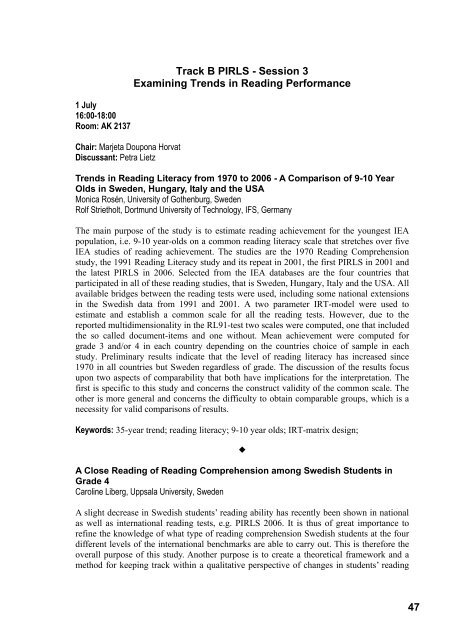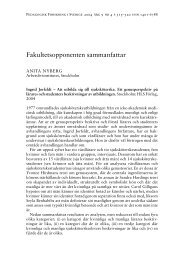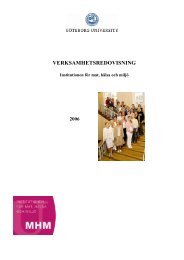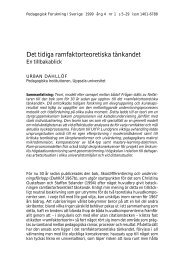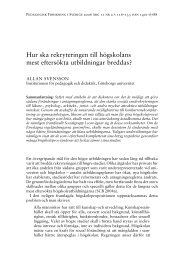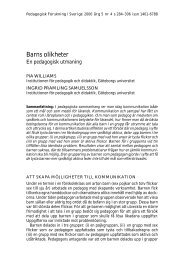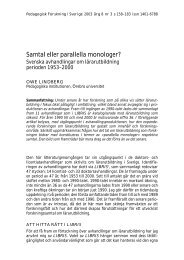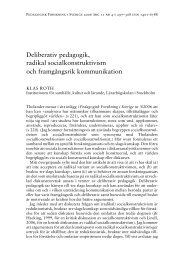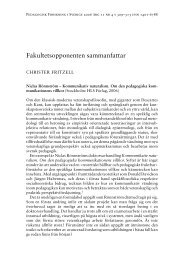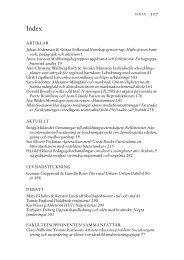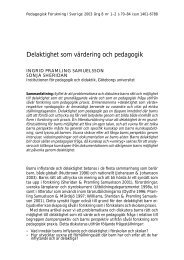University of Oslo Workshops June 29-30 Conference July 1-3 ...
University of Oslo Workshops June 29-30 Conference July 1-3 ...
University of Oslo Workshops June 29-30 Conference July 1-3 ...
Create successful ePaper yourself
Turn your PDF publications into a flip-book with our unique Google optimized e-Paper software.
1 <strong>July</strong><br />
16:00-18:00<br />
Room: AK 2137<br />
Chair: Marjeta Doupona Horvat<br />
Discussant: Petra Lietz<br />
Track B PIRLS - Session 3<br />
Examining Trends in Reading Performance<br />
Trends in Reading Literacy from 1970 to 2006 - A Comparison <strong>of</strong> 9-10 Year<br />
Olds in Sweden, Hungary, Italy and the USA<br />
Monica Rosén, <strong>University</strong> <strong>of</strong> Gothenburg, Sweden<br />
Rolf Strietholt, Dortmund <strong>University</strong> <strong>of</strong> Technology, IFS, Germany<br />
The main purpose <strong>of</strong> the study is to estimate reading achievement for the youngest IEA<br />
population, i.e. 9-10 year-olds on a common reading literacy scale that stretches over five<br />
IEA studies <strong>of</strong> reading achievement. The studies are the 1970 Reading Comprehension<br />
study, the 1991 Reading Literacy study and its repeat in 2001, the first PIRLS in 2001 and<br />
the latest PIRLS in 2006. Selected from the IEA databases are the four countries that<br />
participated in all <strong>of</strong> these reading studies, that is Sweden, Hungary, Italy and the USA. All<br />
available bridges between the reading tests were used, including some national extensions<br />
in the Swedish data from 1991 and 2001. A two parameter IRT-model were used to<br />
estimate and establish a common scale for all the reading tests. However, due to the<br />
reported multidimensionality in the RL91-test two scales were computed, one that included<br />
the so called document-items and one without. Mean achievement were computed for<br />
grade 3 and/or 4 in each country depending on the countries choice <strong>of</strong> sample in each<br />
study. Preliminary results indicate that the level <strong>of</strong> reading literacy has increased since<br />
1970 in all countries but Sweden regardless <strong>of</strong> grade. The discussion <strong>of</strong> the results focus<br />
upon two aspects <strong>of</strong> comparability that both have implications for the interpretation. The<br />
first is specific to this study and concerns the construct validity <strong>of</strong> the common scale. The<br />
other is more general and concerns the difficulty to obtain comparable groups, which is a<br />
necessity for valid comparisons <strong>of</strong> results.<br />
Keywords: 35-year trend; reading literacy; 9-10 year olds; IRT-matrix design;<br />
A Close Reading <strong>of</strong> Reading Comprehension among Swedish Students in<br />
Grade 4<br />
Caroline Liberg, Uppsala <strong>University</strong>, Sweden<br />
<br />
A slight decrease in Swedish students’ reading ability has recently been shown in national<br />
as well as international reading tests, e.g. PIRLS 2006. It is thus <strong>of</strong> great importance to<br />
refine the knowledge <strong>of</strong> what type <strong>of</strong> reading comprehension Swedish students at the four<br />
different levels <strong>of</strong> the international benchmarks are able to carry out. This is therefore the<br />
overall purpose <strong>of</strong> this study. Another purpose is to create a theoretical framework and a<br />
method for keeping track within a qualitative perspective <strong>of</strong> changes in students’ reading<br />
47


